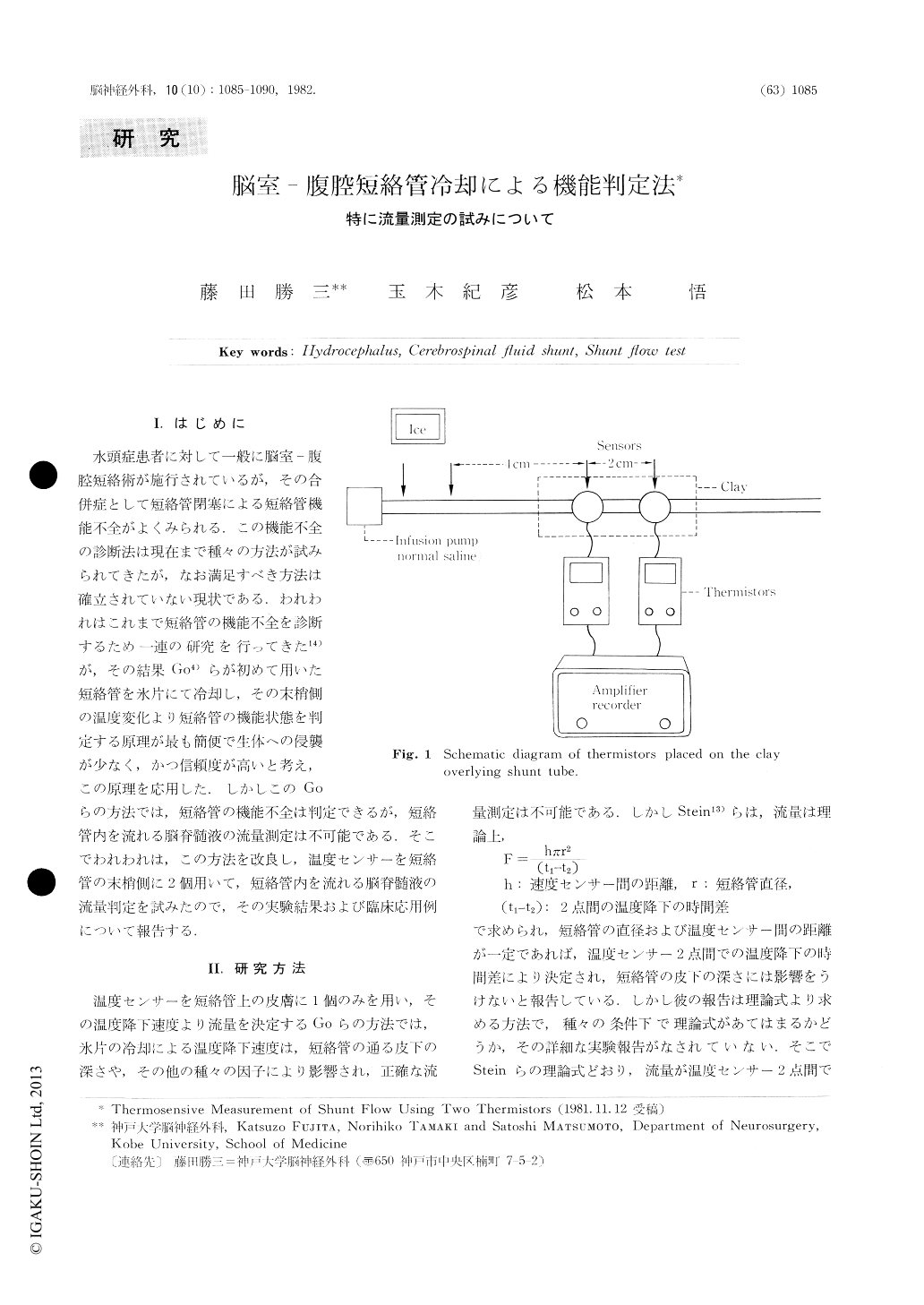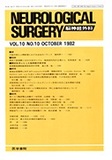Japanese
English
- 有料閲覧
- Abstract 文献概要
- 1ページ目 Look Inside
I.はじめに
水頭症患者に対して一般に脳室-腹腔短絡術が施行されているが,その合併症として短絡管閉塞による短絡管機能不全がよくみられる,この機能不全の診断法は現在まで種々の方法が試みられてきたが,なお満足すべき方法は確立されていない現状である.われわれはこれまで短絡管の機能不全を診断するため一連の研究を行ってきた14)が,その結果Go4)らが初めて用いた短絡管を氷片にて冷却し,その末梢側の温度変化より短絡管の機能状態を判定する原理が最も簡便で生体への侵襲が少なく,かつ信頼度が高いと考え,この原理を応用した.しかしこのGoらの方法では,短絡管の機能不全は判定できるが,短絡管内を流れる脳脊髄液の流量測定は不可能である.そこでわれわれは,この方法を改良し,温度センサーを短絡管の末梢側に2個用いて,短絡管内を流れる脳脊髄液の流量判定を試みたので,その実験結果および臨床応用例について報告する.
Previous efforts to quantify shunt flow rate madeby Goand others did not achieve clinical application,becausevariation in skin thickness and the depth of theshunt tubemight alter the thermal response from patients topatients.
However Stein reported that the rate of flow can becalculated in the equation by measuring the timedifferencebetween the initial deflection of two thermistors,independentof the depth of the shunt tube.

Copyright © 1982, Igaku-Shoin Ltd. All rights reserved.


